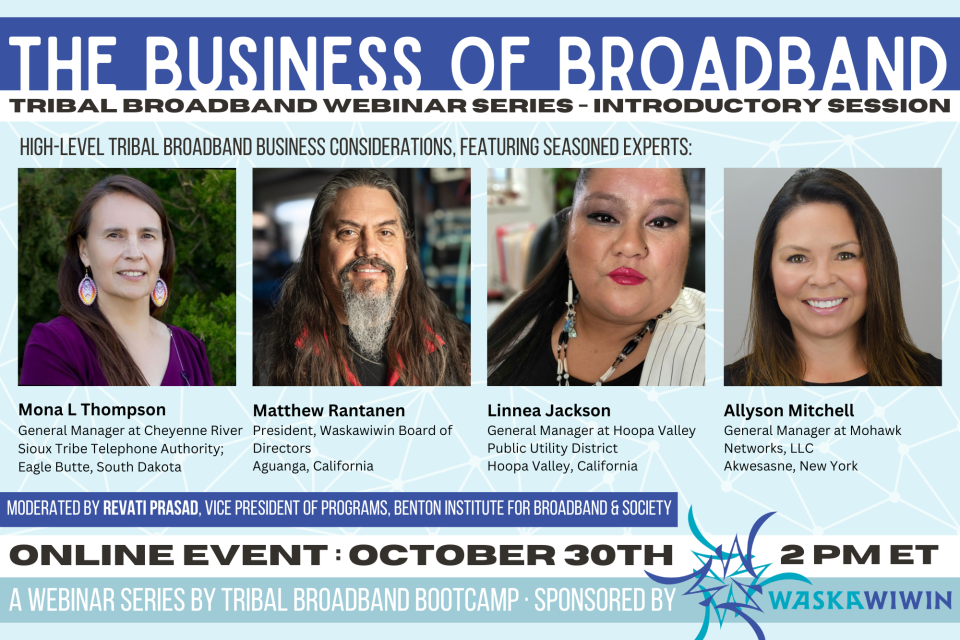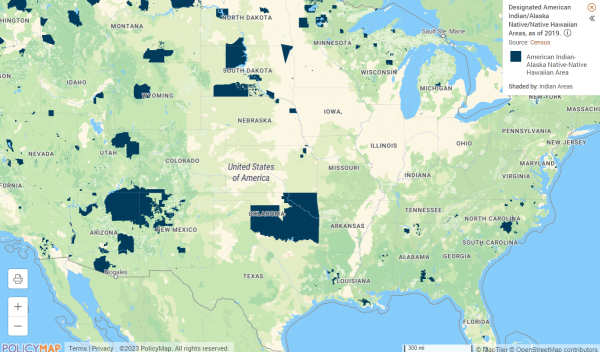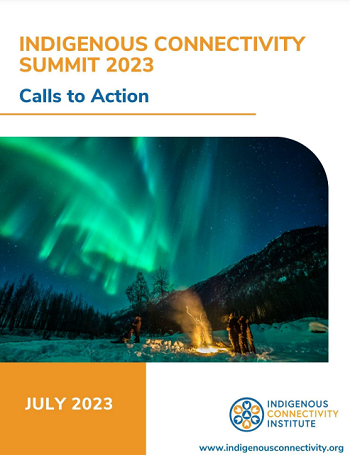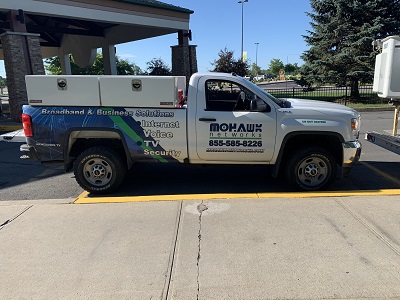
Fast, affordable Internet access for all.

As Tribal Broadband Bootcamps (TBB) prepares later this month to host its ninth bootcamp since the initiative began in 2021, TBB is now offering a series of webinars that will explore different ways of organizing a Tribal Broadband Network.
The Business of Broadband webinars will hone in on how Indigenous networks approach the business of broadband, how they can be structured, how they price their services, and how they can strategically plan for their sustainability.
The introductory session will be held on October 30 at 2 pm ET and will be moderated by Revati Prasad, Vice President of Programs with the Benton Institute. The session will draw from the diverse experiences of seasoned Tribal Broadband experts, representing both regulated and non-regulated Tribal networks. One of the focuses of the first webinar will be to outline the high-level business considerations that arise when establishing Tribal networks.
Watch the webinar here, or below.

With Tribal broadband advocates working to establish better Internet connectivity across Indian Country as the NTIA directs unprecedented federal investments to expand broadband infrastructure, the Center for Indian Country Development (CICD) will lead a timely virtual webinar on tribal broadband next week.
“Nuts, Bolts, and Cables: Opportunities in Tribal Broadband” is being hosted by the CICD, headquartered at the Federal Reserve Bank of Minneapolis, in partnership with the Federal Reserve Bank of Kansas City and the American Indian Policy Institute at Arizona State University.
Slated for October 16th from 2:00-3:30 CT, the webinar will bring together researchers, advocates, network operators, and federal policymakers for a conversation about the challenges and opportunities for Native Nations working to improve Internet access and broadband infrastructure.

The third webinar in a series on "Cultivating Native Economies in the 21st Century," next week’s session will give participants the chance to hear from panelists and presenters with a wealth of expertise in Tribal broadband. Dr. Traci Morris (Chickasaw) and Geoff Blackwell (Muscogee, Chickasaw, Choctaw, and Omaha), leading experts in tribal broadband policy, will speak on a panel about current opportunities in the field.
In another set of awards to connect communities in Indian Country to high-quality, reliable, and affordable broadband, the National Telecommunications and Information Administration (NTIA) released over $74 million to help fund Tribal Broadband projects across the country.
The Tribal Broadband Connectivity Program (TBCP), part of the Biden administration’s Consolidated Appropriations Act passed in the spring of 2021 and administered by NTIA, allocated nearly $1 billion in the first round of funding to support connectivity access and adoption initiatives in Tribal communities; namely, “broadband deployment on tribal lands, telehealth, distance learning, broadband affordability, and digital inclusion.” And while that may seem like a sizable investment, over 280 applications totaling more than $5 billion in funding requests were received before the first 90-day application window closed in September 2021, a reflection of the even larger need Tribal Nations have than what the federal program offers.
In November of 2021, the Infrastructure Investment and Jobs Act (IIJA) funneled another $2 billion into the program and extended the timeline for broadband deployment, turning the program into more than just a short-term pandemic response. Since then, NTIA has been announcing awards on a rolling basis with the program having distributed over $1.7 billion to 198 Tribal entities so far. The funding covers investment in new infrastructure, as well as upgrades and network planning.

This week on the podcast, Christopher speaks with Mona Thompson, General Manager at the Cheyenne River Sioux Tribe Telephone Authority (CRSTTA). CRSTTA serves the Cheyenne River Sioux Reservation in North Central South Dakota, which includes 20 communities dispersed across nearly 3 million acres.
Chris and Mona discuss the history of CRSTTA and the Telephone Authority’s efforts over time to upgrade its infrastructure and continue to offer residents high-quality connections – transitioning from dial-up, to DSL, to fiber. A majority of homes within CRSTTA’s service area now have access to fiber, with the exception of a new housing development the Telephone Authority is currently building fiber out to. Mona also discusses CRSTTA’s digital literacy and affordability efforts which help community members fully take advantage of its service. After 27 years with CRSTTA, Mona soon plans to retire, and during this episode sheds light on the important leadership roles she and other passionate women like her have played and will continue to play in the Tribal Telecommunications space.
This show is 26 minutes long and can be played on this page or via Apple Podcasts or the tool of your choice using this feed.
Transcript below.
We want your feedback and suggestions for the show-please e-mail us or leave a comment below.
Listen to other episodes here or view all episodes in our index. See other podcasts from the Institute for Local Self-Reliance here.
Thanks to Arne Huseby for the music. The song is Warm Duck Shuffle and is licensed under a Creative Commons Attribution (3.0) license.
Each year since its creation in 2017, the Indigenous Connectivity Summit (ICS) has convened those working on the frontlines of Tribal connectivity. It brings together decision makers and stakeholders to build support for digital sovereignty and quality, affordable connectivity for Indigenous communities.
With less than 60 percent of those living on Tribal lands in the lower 48 states having access to basic broadband connections – as Native Nations have regularly been excluded from policy conversations around these issues – ICS has become an important voice as the federal government is finally investing billions of dollars to expand high-speed Internet access across Indian Country.
The Summit, held this year in Anchorage, Alaska, was hosted by the Indigenous Connectivity Institute, an affiliate of Connect Humanity, an organization that supports underserved communities’ pursuit of better Internet access and enhancing digital skills. The Summit has become the most prominent event of its type in North America.

Summit participants don’t just convene and talk. They also agree on a series of calls-to-action for governments and other entities with an eye on promoting digital equity in Indigenous communities. Last year’s calls to action, which included messaging around inclusive Tribal consultation, government and industry accountability, Indigenous spectrum rights, and workforce development, served as the foundation for this year’s focus.
As a young woman of the Nuxalk Nation, Mallory Hans is “clearing a path for future generations.”
A 2022 graduate of the British Columbia Institute of Technology, she’s one of about 50 people hailing from various Tribes and First Nations across North America in attendance for the latest Tribal Broadband Bootcamp, a three-day intensive learning experience focused on building and running Tribal Internet networks.
Held in different tribal regions several times a year since the initiative began in 2021, this bootcamp (the eighth in an ongoing series of hands-on seminars) is being hosted at the Akwesasne Mohawk Casino Resort on the Saint Regis Mohawk reservation along the New York/Canada border.
“So far so good,” Mallory said on Day Two of the bootcamp just as the attendees broke into small groups to go through a variety of demonstration stations set up by bootcamp instructors and Tribal employees who run Mohawk Networks, which provides fiber-to-the-home (FTTH) Internet, video, and voice services across the reservation in northern New York.

In continuing the driving impulse to demystify technologies and build capacity among cohorts in Tribal nations, Day Two was centered around fiber stations that included demonstrations of how network operation centers are run; one on fiber splicing; another showcasing equipment used to install fiber inside of households with representatives from Calix, and another station on the electronic equipment that measures the performance of fiber lines.
“I’m enjoying it, feeling more confident and finding out I’m capable,” said the 22 year-old, newly minted fiber technician.
With billions of federal dollars on the horizon to support broadband infrastructure and digital inclusion, it is essential that states, local officials, service providers, and other organizations work effectively with Tribes so that those living on Tribal lands get connected.
Last week, the National Digital Inclusion Alliance (NDIA) hosted Dr. Traci L. Morris, Executive Director of the American Indian Policy Institute (AIPI) at Arizona State University for a webinar titled “Indigenous Digital Sovereignty: From the Digital Divide to Digital Equity,” which situated Tribal broadband work and Tribal sovereignty in the context of recent federal funding opportunities like BEAD.
“Sovereignty and self-determination are critical aspects of broadband and telecommunications investments in Tribal communities. Putting in a network is an act of self-determination – it is nation-building. It is exercising sovereignty in the active sense. As the United States makes historic investments [in broadband], we must hold it to upholding its trust responsibility to our Nations.” - Dr. Traci L. Morris
A member of the Chickasaw Nation of Oklahoma, Morris has led AIPI for 10 years, and has 14 years of experience in digital equity and inclusion, network neutrality, and Tribal broadband. Morris co-authored Tribal Technology Assessment: The State of Internet Service on Tribal Lands (2019), which helped to fill a gap in quality data on connectivity needs in Indian Country.
Morris’s webinar dug into her own participatory research data investigating the digital divide in Indian Country, which was prompted by a dearth of quality data representing connectivity needs for Native Americans living on Tribal lands.
As digital equity advocates push Congress to replenish the rapidly diminishing funds that support the Affordable Connectivity Program (ACP), a recently published report should help bolster the case that the program – which subsidizes the cost of monthly Internet service for income-eligible households – won’t just help more Americans get broadband access, it can also incent Internet service providers (ISPs) to make infrastructure investments in unserved and underserved areas.
The report, titled "Closing the Digital Divide Benefits Everyone, Not Just the Disconnected" – published by Common Sense and the Boston Consulting Group (BCG) – emphasizes the benefits of universal Internet access across education, health care, government services, and employment. It makes the case that universal connectivity would allow institutions to “integrate Internet-based technologies into their services, improving them for the benefit of all.”
Most notably, the report advocates for increased ACP enrollment, arguing that in addition to providing low-income households some short-term relief from pricey Internet bills, the program can provide an economic incentive for ISPs to invest in unserved and underserved communities by increasing the return on investment (ROI) in areas that have previously been considered unprofitable.
The Community Broadband Networks (CBN) team here at the Institute for Local Self-Reliance (ILSR) is thrilled to announce we will once again welcome a postdoctoral fellow this coming fall to undertake a two-year project that advances policy initiatives in support of expanding broadband access and digital sovereignty for Tribal Nations across the U.S.
It’s the second time the American Council of Learned Societies (ACLS) has selected ILSR as a host organization for a Leading Edge Fellowship, which embeds humanities and social science PhDs with nonprofits committed “to solve problems, build capacity, and advance justice and equity in society.”
Earlier this month, ACLS announced 18 new ACLS Leading Edge Fellows for 2023. In September, one of those fellows – Jessica E. Auer (PhD, History, University of North Carolina at Chapel Hill) – will join the CBN team, kicking off her full-time fellowship as a Tribal Broadband Policy Analyst.

Jessica will conduct original research and writing to help develop policy narratives that can be used to support new and existing tribal broadband efforts.
With less than 60 percent of those living on Tribal lands in the lower 48 states having access to basic broadband connections – as Native Nations have regularly been excluded from policy conversations around these issues – Tribal citizens miss out on educational, economic, telehealth, social networking, and a panoply of other activities that foster community resiliency and democratic engagement in the modern world.

This week on the podcast, Christopher is joined by Kevin Shendo, Education Director at the Pueblo of Jemez Department of Education, and Angela Diakah, Network Operations Supervisor at Jemez Pueblo Tribal Network (JPTN). JPTN is a wireless network serving more than 500 households in the Jemez Pueblo north of Albuquerque. Kevin and Angela share the origins of the network, spurred in part by prior serve from Windstream that was costing households on average $100/month for 4/1Mbps service.
Angela shares the story of her first install and then Kevin walks Christopher through how the Tribe currently subsidizes the entire cost of the network with the help of federal dollars, and the plan for shifting to a traditional subscription service model subsidized at the household level by the Affordable Connectivity Program. Finally, Angela shares some of the network's digital equity and inclusion work to make sure that every household that wants can make the fullest use of its connection.
This show is 25 minutes long and can be played on this page or via Apple Podcasts or the tool of your choice using this feed.
Transcript below.
We want your feedback and suggestions for the show-please e-mail us or leave a comment below.
Listen to other episodes here or view all episodes in our index. See other podcasts from the Institute for Local Self-Reliance here.
Thanks to Arne Huseby for the music. The song is Warm Duck Shuffle and is licensed under a Creative Commons Attribution (3.0) license.